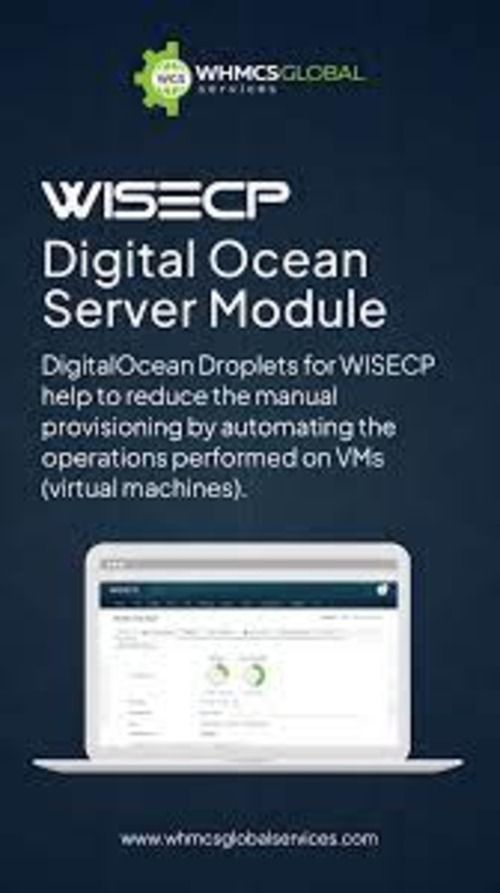
How to Create a Server on Digitalocean
Creating a server (called a droplet) on DigitalOcean is a straightforward process. Here's a step-by-step guide to help you get started:
Sign Up and Log In: If you don't have a DigitalOcean account, visit the DigitalOcean website and sign up for a new account. Once registered, log in to your account.
Access the Dashboard: After logging in, you will be taken to the DigitalOcean dashboard.
Create a Droplet: To create a new server (droplet), click on the "Create" button and select "Droplets" from the dropdown menu.
Choose an Image: In this step, you'll choose the operating system for your droplet. DigitalOcean provides various pre-configured images, including popular Linux distributions (Ubuntu, CentOS, Debian, etc.), as well as application-specific images. Select the one that best suits your needs.
Choose a Plan: Next, you'll need to choose a pricing plan based on your requirements. DigitalOcean offers different plans with varying amounts of CPU, RAM, and storage. Select the plan that meets your server's needs and fits within your budget.
Select a Datacenter Region: Choose a datacenter region that is geographically closest to your target audience or you, as this can help improve the server's performance and latency.
Additional Options: You can configure additional options such as enabling backups, monitoring, and user data (cloud-init scripts) if needed. Review these options and customize them according to your requirements.
Add SSH Keys (Optional): SSH keys provide a more secure way to access your server compared to passwords. You can add your SSH public key to the droplet during creation. If you don't have an SSH key, you can create one later and add it to the server.
Choose a Hostname: Give your droplet a unique hostname to help identify it.
Finalize and Create: Review all the settings to ensure they are correct. Once you are satisfied, click on the "Create Droplet" button.
Wait for Deployment: DigitalOcean will now create your droplet based on the selected settings. The process usually takes a minute or two.
Access Your Server: Once the droplet is ready, you will receive an email with the server's IP address and login credentials (if you opted for password-based authentication). Use an SSH client to connect to your server using the provided IP address or hostname.
That's it! You now have a server up and running on DigitalOcean, ready to host your applications or websites. Make sure to secure your server, keep it updated, and configure any necessary services for your specific use case. Happy hosting!

What Is DigitalOcean?
DigitalOcean is a cloud infrastructure provider that offers cloud computing services to developers, businesses, and individuals. It allows users to deploy and manage virtual servers, known as "droplets," as well as other cloud-based services like databases, object storage, networking features, and more. DigitalOcean is popular among developers and startups due to its user-friendly interface, cost-effectiveness, and scalable offerings.
Key features of DigitalOcean include:
Droplets: Virtual servers that can be easily deployed and scaled up or down as needed. Users can choose from various operating system images and configurations.
Block Storage: Scalable and high-performance block storage volumes that can be attached to droplets for additional storage space.
Object Storage (Spaces): A scalable and secure object storage service for storing and serving large amounts of unstructured data, such as images, videos, and backups.
Kubernetes: A managed Kubernetes service that allows users to deploy, manage, and scale containerized applications using Kubernetes clusters.
Managed Databases: Fully managed databases (like PostgreSQL, MySQL, and Redis) that remove the need for manual database management tasks, providing automated backups, updates, and scaling.
Load Balancers: Automated load balancing service that distributes incoming traffic across multiple droplets to ensure high availability and improved performance.
Networking: Various networking features, such as floating IPs, private networking, and virtual private clouds (VPCs), to manage network traffic and security.
API and CLI: DigitalOcean provides a robust API and command-line interface (CLI) that allows developers to automate and interact with their cloud resources programmatically.
Developer Tools: A range of tools and resources, including one-click applications and development libraries, to streamline the deployment and management process.
DigitalOcean's simplicity, competitive pricing, and focus on catering to developers make it a popular choice for individuals, startups, and businesses looking to host their applications, websites, and other services in the cloud without the complexity associated with some larger cloud providers.
Appreciate the creator